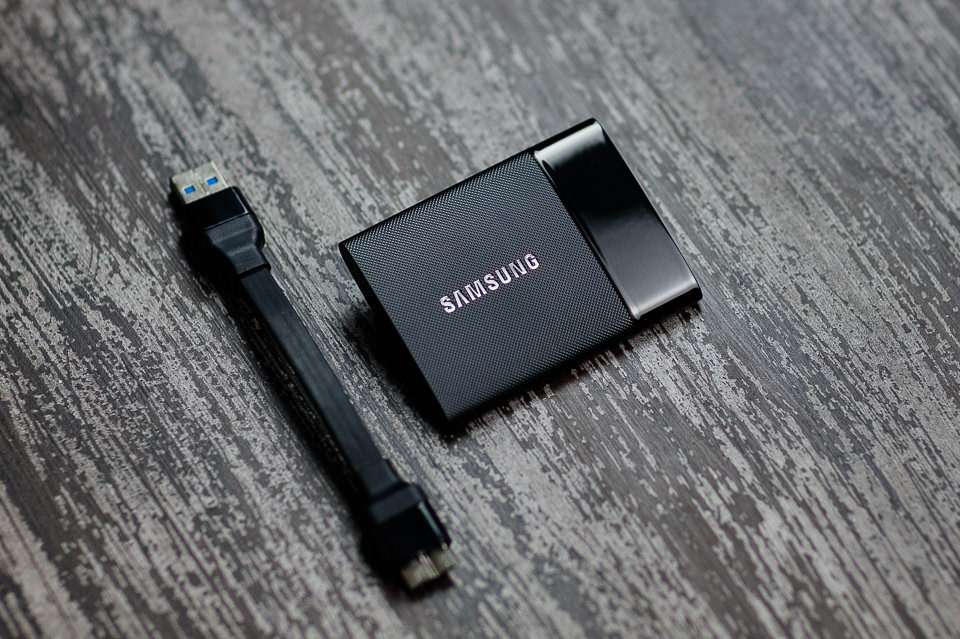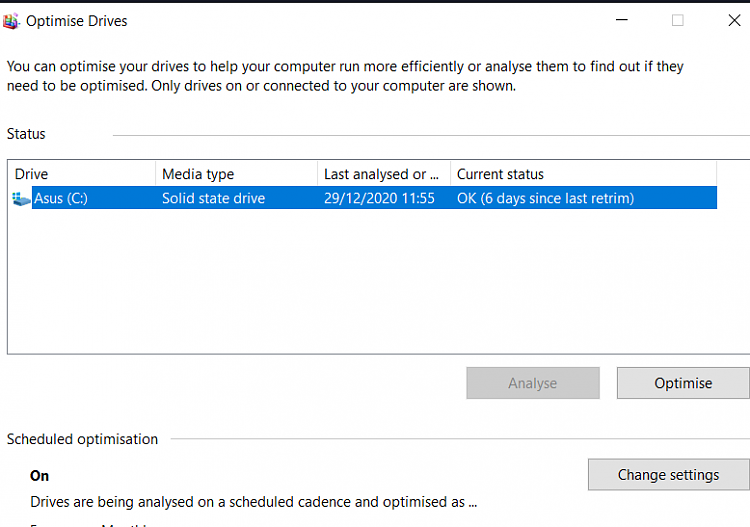Relax if your SSD disk is not showing up on your computer. There are four common cases, check and follow the corresponding solution to get rid of this issue now.
| Workable Solutions | Step-by-step Troubleshooting |
|---|---|
| Case 1. Drive Letter Missing | Open Disk Management > Right-click SSD...Full steps |
| Case 2. SSD Not Initialized | Open Disk Management > Right-click SSD...Full steps |
| Case 3. Unsupported File System | SSD becomes RAW, Run EaseUS data recovery...Full steps |
| Case 4. SSD Driver Issue | Open Device Manager > Go to Disk drives...Full steps |
You May Also Interest In:
If you are having a similar issue on your hard drive, you may directly try the fixes below.
Are your hard drives, be it new or old, internal or external, not showing up in File Explorer or Disk Management? Follow to learn how to make your hard drive showing up again in Windows 10/8/7 without losing data.
SSD not showing up in My Computer
'I recently installed a Samsung SSD on my Windows 10 computer, but I find it not showing up under My Computer where the other hard drive is present. Is there any way to display the SSD?'
New SSD not showing up in Disk Management
Samsung Portable Ssd Not Detected By Software On Macbook
I have a different issue - my Samsung SSD was detected via external SATA/USB plus. It allowed me to format it, even install fresh OS, but as soon as I swapped it with my old HDD on my early 2011 Mac, the only drive recognizable by system was a Recovery drive. Mac does not detect my SSD via internatl SATA connection. Samsung SSD Drivers. SAMSUNG T5 Portable SSD 2TB - Up to 540MB/s - USB 3.1 External Solid State Drive. Superfast read-write speeds of up to 540 MB/s. Top to bottom metal design that fits in the palm of your hand. Optional password protection and AES 256-bit hardware encryption. Includes USB type C to C and USB type C to A cables. Shock resistance. Find frequently asked questions and solutions for your upgraded computing life with Samsung V-NAND SSD products. Consumer SSD Troubleshooting FAQs.
'I got a new M.2 SSD from Intel. When I connected it to my PC, it does not show up in the File Explorer nor Disk Management. I don't know where goes wrong. Please help.'

The above users' stories are telling the same thing that happens to a Solid State Drive (SSD), which does not show up as other connected hard drives. In Windows 10, as well as earlier Windows operating systems, an external storage device not detected issue would throw people into unpleasant situations. They can't add files and content to the SSD, nor can they access the existing data on it. Therefore, the biggest concern is how to fix the 'SSD not showing up' problem quickly and easily.
Next, we list four cases of SSD not showing up in Windows 10, and you can try to fix the issue accordingly. Download EaseUS Data Recovery Wizard Free when it's necessary to recover data from an inaccessible/formatted Solid State Drive.
- Important
- Solutions from Case 1 to Case 3 are based on the prerequisite for the SSD is not showing up in File Explorer but you can find it in the Windows Disk Management. And the Windows Disk Management solutions can be replaced by third-party free partition manager software as well, like EaseUS Partition Master, including change drive letter and paths, initialize hard drive and format a hard drive partition. The advantage of using third-party software over Disk Management is the ease of use.
Case 1. SSD not showing up because the drive letter is missing or conflicting
Sometimes your SSD not showing up is because the drive letter of the SSD is missing or conflicting with another disk, Windows OS is unable to recognize it. You can solve this problem by assigning the SSD a new drive letter in Windows Disk Management manually.
Samsung Portable Ssd Not Detected By Software On Mac
To assign the SSD a new drive letter, follow the steps:
- Step 1: Right-click on 'This PC', select 'Manage'. Under the Storage section, click 'Disk Management'.
- Step 2: Right-click on the SSD partition and select 'Change Drive Letter and Paths…'.
- Step 3: Among Add, Change, and Remove, click the 'Change' button, and then select a drive letter from the list. Click 'OK' to confirm.
Case 2. SSD not showing up because it is not initialized
If you get a new SSD and it won't show up in Windows Explorer, it's likely in the 'uninitialized' state. You must initialize a disk before Logical Disk Manager can access it.
Also, for an old SSD that shows the error 'disk unknown not initialized', the result is the same. In these two situations, to fix the problem, you can try to connect the SSD to another working computer to check if it reports the same error. Otherwise, you need to initialize the SSD in Windows 10.
To initialize an SSD, follow the steps:
- Step 1: Open Disk Management on your computer.
- Step 2: Find and right-click the SSD you want to initialize, and then click 'Initialize Disk'.
- Step 3: In the Initialize Disk dialog box, select the disk(s) to initialize. You can select whether to use the master boot record (MBR) or GUID partition table (GPT) partition style.
'Which one should I choose, MBR or GPT?' If you want to know the difference between MBR and GPT, read this article to get more information.


Case 3. SSD not showing up because the file system is not supported
If the above two methods do not work in your case, we need to think further. One presumption is that the file system has corrupted or Windows does not support the current file system.
As investigated, the relevant file system issues are mainly displayed as 'RAW', 'Free space', or 'Unallocated space'. To fix the file system issue, reformatting the disk would be enough.
- Warning
- As Disk formatting will completely erase data on it. If you didn't create a data backup before, download EaseUS Data Recovery Wizard for FREE to recover data from formatted SSD.
Step 1. Scan the SSD
On EaseUS Data Recovery Wizard, select the drive marked as SSD where you lost data, and click the 'Scan' button.

Step 2. View the results
When the scanning finishes, find lost SSD data by using the 'Filter' and 'Search' options.
Step 3. Recover SSD files
Select desired data and click the 'Recover' button to get back lost SSD files.
Case 4. SSD not showing up because of disk driver issues
Another possible situation is the SSD is detected but it is not displayed in 'My Computer'. This is because the disk drive is not installed correctly. So, you can try to reinstall the SSD driver to check if it can help to fix the issue.
- Step 1:Right-click on 'This PC', select 'Manage'. Under the System Tools section, click 'Device Manager'.
- Step 2:Go to Disk drives. It should list the storage devices that you have connected to your PC.
- Step 3:Right-click the SSD and choose 'Uninstall device'.
- Step 4:Remove the SSD and restart your system. Try to connect the SSD again to check if Windows 10 detects the SSD as normal.
Samsung Magician Software Not Detecting Ssd
Conclusion & FAQs
SSD, plus every other form of storage media, are prone to mechanical failure and physical damage. We need to make further plans to safeguard data on the storage drive. Backup is always a wise choice. It's never too late to take action to save a copy of hard drive data to another safe location, like a backup drive, cloud, or network drive... To make a whole backup of your hard drive, EaseUS Todo Backup Free can do you a favour.
In conclusion, upon the topic of SSD not showing up in Windows 10, we analyzed four cases in total and showcased the corresponding fixes. During the middle and final repair process, we recommend three assistive tools.
- EaseUS Data Recovery Wizard: to recover lost data from inaccessible and formatted hard drive/partition.
- EaseUS Partition Master: to assign a drive letter, initialize a disk, and format a hard drive.
- EaseUS Todo Backup: to back up a hard drive/partition.
In the end, we selected some top asked questions that are related to the SSD not showing up problems in Windows. For example:
1. Why is my SSD not showing up?
Driver issues are one of the major reasons. Just like a hard drive, most times the SSD is detected but not showing up in My Computer because the disk driver is not installed properly. So, you can try to reinstall the SSD driver to check if it can help to fix the issue.
2. How do I get my new SSD to show up?
If you get a new SSD and it won't show up in the Windows Disk Management, it's likely in the uninitialized state. You must initialize a disk before the Logical Disk Manager can access it.
Why My Ssd Is Not Detected
3. How do I fix SSD not detected in BIOS?
Samsung Portable Ssd Not Detected By Software On Mac Os
To make BIOS detect the SSD, you need to configure the SSD settings in BIOS as follows.
- Restart your computer, and press the F2 key after the first screen.
- Press the Enter key to enter Config.
- Select Serial ATA and press Enter.
- Then you'll see the SATA Controller Mode Option.
- Save your changes and restart your computer to enter BIOS.